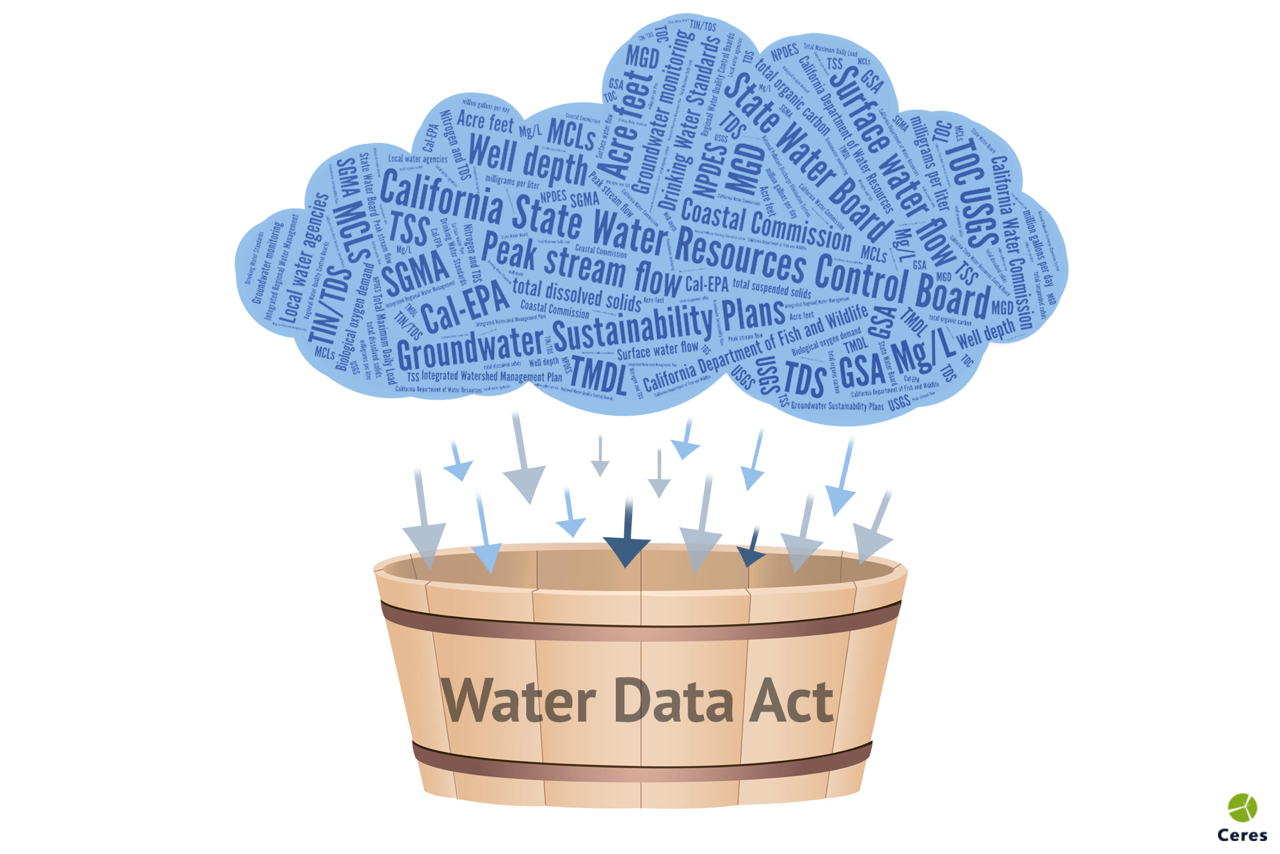At the end of September, water wonks cheered as Governor Jerry Brown signed into law an important new bill that will set California on the path towards a 21st-century water management system. Though it received little attention amid the flurry of new bills signed by the governor, the Open and Transparent Water Data Act (AB 1755) is a critical step forward in ensuring the long-term sustainability of California’s dwindling water resources.
As the bill’s author, assembly member Bill Dodd, put it in a press release: “The drought has exposed the need for a modern water information system to address the state’s water supply.”
I heartily agree. While reams of water data are currently collected by local, state and federal agencies, the information is often inaccessible or incompatible. That creates inefficiencies for water managers. How, for example, can a municipal water manager and a regional water quality control board make a decision to either move forward with, or dial back, a water reuse project that would reduce discharges of treated wastewater to a nearby surface water if he or she doesn’t know the environmental flow needs of the stream, or have information about upstream discharges and withdrawals?
Municipal wastewater treatment facilities report discharge volume and water quality data to the regional water board, but the California Department of Fish and Wildlife or a neighboring municipality is often the keeper of upstream flow data. Meanwhile the state water board or the Department of Water Resources has data on diversions. Now, water managers will have access to all of this data at their fingertips.

What’s more, to date there are no clear protocols for promoting compatibility among datasets that would allow for sharing, aggregation and analysis by multiple groups. As one clear example, more than 2,000 local and state agencies are involved in California groundwater management, and there is a recognized lack of consistency in data collection among the groups. In fact, a survey of groundwater professions conducted by Stanford’s Water in the West program identified prevalent inconsistencies in groundwater data formatting and collection methodologies. Further, they noted inadequate spatial and temporal data collection. Thus, the data are hard to compare and assess by decision-makers.
The law sets out to address these problems by creating an online water data information system that integrates existing datasets and provides information on water transfers. And it requires the development of open-data protocols for data sharing, transparency, documentation and quality control that will avoid misunderstandings, reduce disputes and increase the effectiveness of management decisions. Hopefully, the system will also help the state more easily identify gaps in data to help drive new data collection efforts.
All of that should go a long way toward making California’s water transfer market more transparent and more efficient – and a well-functioning water market is key in periods of drought. Water markets can help steer water to its best use and create incentives for efficiencies in water management. The Environmental Defense Fund’s recent report “Recommended Reforms for the California Water Market,” in fact calls for robust, transparent data on all water exchanges as a key policy recommendation.
AB 1755 helps get California on this path.
The new law will also help with implementation of the Sustainable Groundwater Management Act. More comprehensive data at the fingertips of the Groundwater Sustainability Agencies will help them to better understand the water balance of their groundwater basins, so that they can be better managed.
As the old business school adage goes, “What gets measured gets managed.” Though perhaps more apt here is, “What gets measured, and shared, gets managed.” And that takes me to my last point.
Some of the state’s largest businesses came out in support for the bill. In a letter to members of the Senate [organized by Ceres Connect the Drops Campaign], they wrote: “A key constraint to creating a sustainable water management system, one that is able to meet the challenges of prolonged drought as well as heavy rainfall and flooding, is the lack of accessible data that would support timely and science-based decision making and a more robust water market.”
As business leaders, they know that comprehensive water use data will lead to smarter water management decisions, that will help in turn ensure sustainable water supplies for California’s future. And that’s good news for all of us.
The views expressed in this article belong to the author and do not necessarily reflect the editorial policy of Water Deeply.

